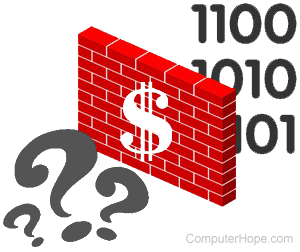Paywall

A paywall or hard paywall is a way for websites to restrict access to their information so that only paying users can read it. It is similar to a firewall in preventing users from accessing certain data. Most commonly, paywalls are used by news sites and scholarly publications. Users must make a one-time payment or pay a recurring subscription fee to access website content behind a paywall.
When were paywalls first used?
Newspaper and magazine sites began implementing paywalls due to declining printed material subscriptions. The first paywall was implemented in 1997 by the WSJ (Wall Street Journal). By 2007, the WSJ had over one million users, proving that paywalls were a viable business model for online publications.
What is a soft paywall?
A soft paywall or metered paywall is a paywall that allows visitors to view a specific number of articles before converting to a hard paywall. For example, a website could allow visitors to view ten full articles before hiding all other articles behind a hard paywall. You'll know you're viewing this type of page when it gives you a warning on the page about how many more pages you can view for free.
Paywalls on the modern Internet
The use of paywalls remains a debated topic. Some view paywalls as necessary in the current technology and online age, while others maintain that information on the Internet should remain free.
Computer Hope does not restrict information behind a paywall. All information on Computer Hope is available to everyone, free of charge.
What is a regwall?
A regwall is a term to describe an app, website, or another service that requires registration before anything can be viewed. Unlike a paywall, you can view information behind a regwall after registering and creating an account.
